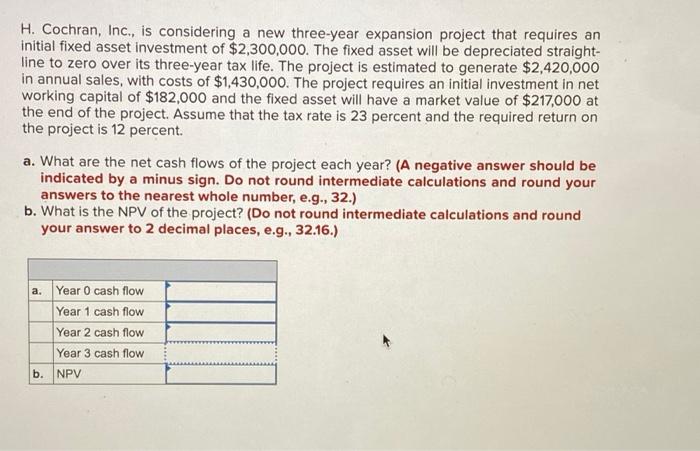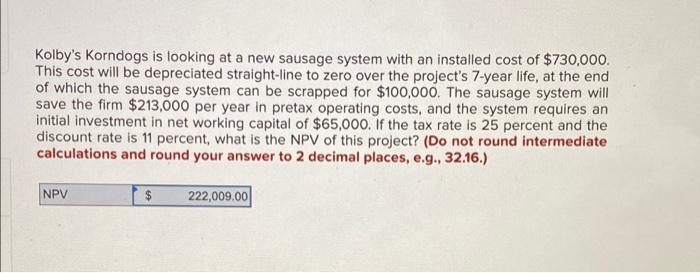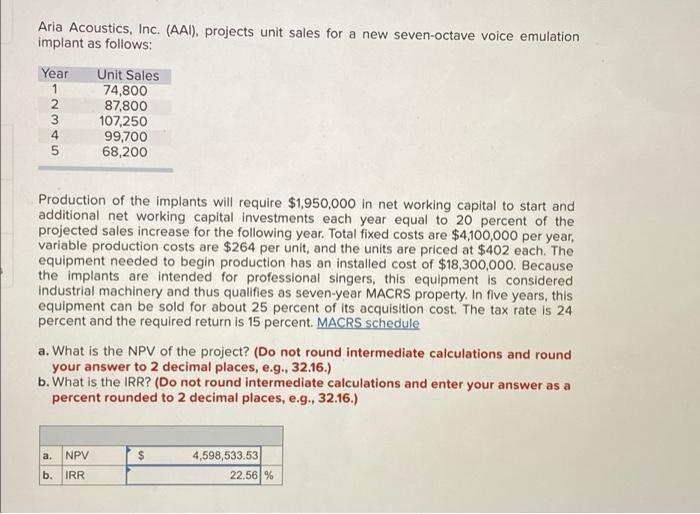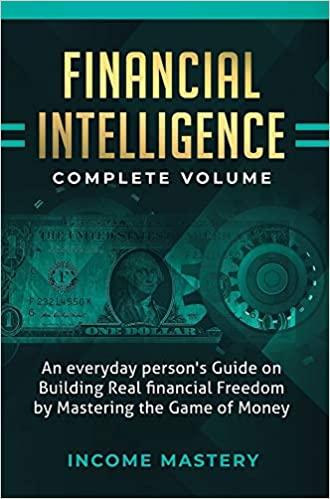H. Cochran, Inc., is considering a new three-year expansion project that requires an initial fixed asset investment of $2,300,000. The fixed asset will be depreciated straight- line to zero over its three-year tax life. The project is estimated to generate $2,420,000 in annual sales, with costs of $1,430,000. The project requires an initial investment in net working capital of $182,000 and the fixed asset will have a market value of $217,000 at the end of the project. Assume that the tax rate is 23 percent and the required return on the project is 12 percent. a. What are the net cash flows of the project each year? (A negative answer should be indicated by a minus sign. Do not round intermediate calculations and round your answers to the nearest whole number, e.g., 32.) b. What is the NPV of the project? (Do not round intermediate calculations and round your answer to 2 decimal places, e.g., 32.16.) a. Year O cash flow Year 1 cash flow Year 2 cash flow Year 3 cash flow b. NPV Kolby's Korndogs is looking at a new sausage system with an installed cost of $730,000. This cost will be depreciated straight-line to zero over the project's 7-year life, at the end of which the sausage system can be scrapped for $100,000. The sausage system will save the firm $213,000 per year in pretax operating costs, and the system requires an initial investment in net working capital of $65,000. If the tax rate is 25 percent and the discount rate is 11 percent, what is the NPV of this project? (Do not round intermediate calculations and round your answer to 2 decimal places, e.g., 32.16.) NPV $ 222,009,00 Aria Acoustics, Inc. (AAI), projects unit sales for a new seven-octave voice emulation implant as follows: Year Unit Sales 1 74,800 2 87,800 3 107,250 4 99,700 5 68,200 UAWN Production of the implants will require $1,950,000 in net working capital to start and additional net working capital investments each year equal to 20 percent of the projected sales increase for the following year. Total fixed costs are $4,100,000 per year, variable production costs are $264 per unit, and the units are priced at $402 each. The equipment needed to begin production has an installed cost of $18,300,000. Because the implants are intended for professional singers, this equipment is considered Industrial machinery and thus qualifies as seven-year MACRS property. In five years, this equipment can be sold for about 25 percent of its acquisition cost. The tax rate is 24 percent and the required return is 15 percent. MACRS schedule a. What is the NPV of the project? (Do not round intermediate calculations and round your answer to 2 decimal places, e.g. 32.16.) b. What is the IRR? (Do not round intermediate calculations and enter your answer as a percent rounded to 2 decimal places, e.g., 32.16.) a. NPV $ 4,598,533.53 22.56% b. IRR









